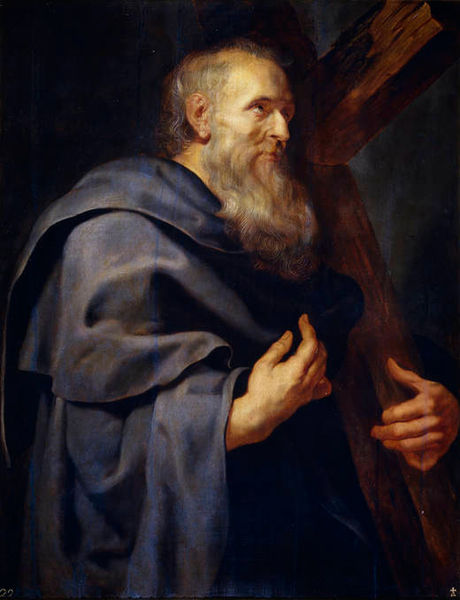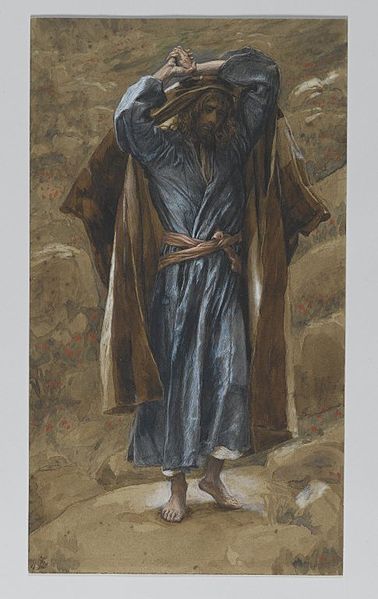<Back to Index>
- Apostle Philip, Uknown
PAGE SPONSOR


Philip the Apostle (Greek: Φίλιππος, Philippos) was one of the Twelve Apostles of Jesus. Later Christian traditions describe Philip as the apostle who preached in Greece, Syria and Phrygia.
In the Roman Catholic Church, the feast day of Philip, along
with that of James the Just, was traditionally observed on
1 May, the anniversary of the dedication of the church
dedicated to them in Rome (now called the Church of the
Twelve Apostles). The Eastern Orthodox Church celebrates
Philip's feast day on 14 November. One of the Gnostic
texts found in the Nag Hammadi library in 1945 has been
given the modern title "Gospel of Philip", though this
text makes no claim to have been written by Philip. It
gets the name simply because Philip is the only apostle
ever mentioned in the text (73:8).
The Gospel of John describes Philip's calling as a disciple of Jesus. Philip is described as a disciple from the city of Bethsaida, and connects him to Andrew and Peter, who were from the same town. It further connects him to Nathanael (sometimes identified with Bartholomew) whom Philip first introduces to Jesus. The authors of the Synoptic Gospels also describe Philip as a disciple of Jesus. Philip was tested by Jesus about how to feed 5,000 people (John 6:4-7), and he was approached by Greeks who wanted to see Jesus (John 12:20-21).
Of the four Gospels, Philip figures most prominently in the Gospel of John. His two most notable appearances in the narrative are as a link to the Greek community. Philip bore a Greek name (see Philip II of Macedon) and we may infer from the context that Philip spoke Greek. Philip introduces members of this community to Jesus. During the Last Supper when Philip asked Jesus to show them the Father, he provides Jesus the opportunity to teach his disciples about the unity of the Father and the Son.
Philip is always listed fifth among the apostles.
Christian stories about St Philip's life and ministry can be found more often in the extra-canonical writings of later Christians than in the New Testament.
Other legendary material about Philip can be misleading, as many hagiographers conflated Philip the Apostle with Philip the Evangelist. The most notable and influential example of this is the hagiography of Eusebius, in which Eusebius clearly assumes that both Philips are the same person. As early as 1260, Jacobus de Voragine noted in his Golden Legend that the account of Philip's life given by Eusebius was not to be trusted.
Later stories about Saint Philip's life can be found in the anonymous Acts of Philip, probably written by a contemporary of Eusebius. This non - canonical book recounts the preaching and miracles of Philip. Following the resurrection of Jesus, Philip was sent with his sister Mariamne and Bartholomew to preach in Greece, Phrygia, and Syria. Included in the Acts of Philip is an appendix, entitled "Of the Journey of Philip the Apostle: From the Fifteenth Act Until the End, and Among Them the Martyrdom." This appendix gives an account of Philip's martyrdom in the city of Hierapolis. According to this account, through a miraculous healing and his preaching Philip converted the wife of the proconsul of the city. This enraged the proconsul, and he had Philip, Bartholomew and Mariamne all tortured. Philip and Bartholomew were then crucified upside down, and Philip preached from his cross. As a result of Philip's preaching the crowd released Bartholomew from his cross, but Philip insisted that they not release him, and Philip died on the cross. Another legend is that he was martyred by beheading in the city of Hierapolis. Philip is commonly associated with the symbol of the Latin cross. Other symbols assigned to Philip include: the cross with the two loaves (because of his answer to the Lord in John 6:7), a basket filled with bread, a spear with the patriarchal cross, and a cross with a carpenter's square.
On Wednesday, 27 July 2011, the Turkish news agency Anadolu reported that archeologists had unearthed the Tomb of Saint Philip during excavations in Hierapolis close to the Turkish city Denizli. The Italian professor Francesco D'Andria stated that scientists had discovered the tomb, within a newly revealed church. He stated that the design of the Tomb, and writings on its walls, definitively prove it belonged to the martyred Apostle of Jesus.